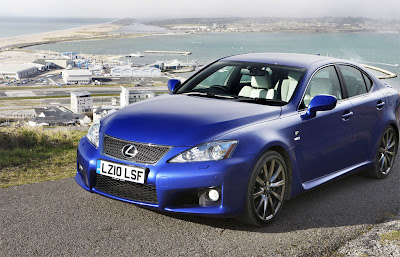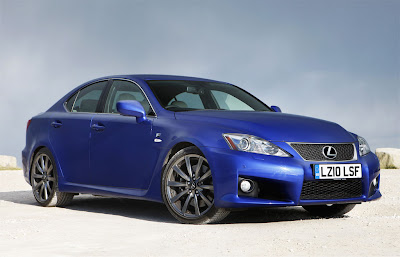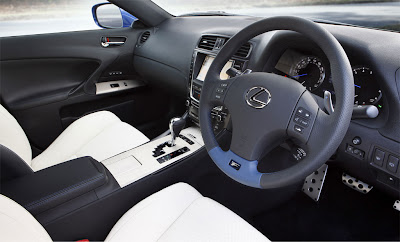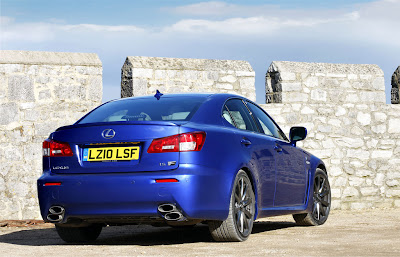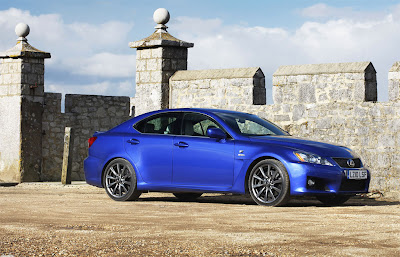
Lincoln is breaking new ground with the Lincoln C Concept, a new big idea for a small luxury car. Designed with today's upscale, urban consumer in mind, the Lincoln C Concept brings the presence and elegance of a large Lincoln to a smaller, more efficient C-sized car.
Featuring a 1.6-liter EcoBoost engine and Ford's all-new dry, dual-clutch PowerShift six-speed transmission, the Lincoln C Concept achieves 43 mpg on the highway, while offering up an impressive 180 horsepower and 180 ft.-lbs. of torque. PowerShift and outstanding driving dynamics make the Lincoln C Concept fun for the driver.
Lincoln C Concept
Sporty, Elegant Exterior Design
When designers developed the Lincoln C Concept, their goal was to create a C-sized automobile with both presence and elegance. Their vision: a smaller, more fuel-efficient car that could maneuver easily in congested urban areas and compact parking spaces, yet still provide driver and passengers with levels of luxury and comfort usually reserved for larger sedans.
One of the most distinctive features of the Lincoln C is its unique silhouette. The visual mass of the car is very low to the road. A low-slung shoulder line with a wheel-at-each-corner stance supports a dynamic, slightly formal cabin. The aim was "go kart" visual stability combined with elegant lines and surfaces.
The modern appearance of the Lincoln C reflects the timeless, iconic elements of the Lincoln DNA: sheer surfaces bounded by defined creases; a cantilevered roof extending from a strong C-pillar; a confident double-wing chrome grille; full-width tail lamps and rocker brightwork.
The front end of the concept is unmistakably Lincoln. The signature grille encapsulates LED headlamps that - like the taillights - are made with prismatic optical elements that create depth and visual sophistication. A sculpted groove in the top of the front hood - which derives its shape from the Lincoln badge - adds a finishing touch to the grille of the car.
A low shoulder line combines with a strong, high belt line to create a sense of safety and privacy inside and outside of the vehicle.
An aluminum cantrail adds elegance to the concept by extending the beltline to the rear glass and breaking up the otherwise tall C-pillar. Aluminum is also visible inside the door apertures.

The Lincoln C is absent of a B-pillar or center post. The center-opening doors - a classic Lincoln trait that rekindles memories of the 1961 Continental - allow effortless access to first- and second-row bench seats and give the vehicle a limousine-like quality.
Sleek side mirrors house both advanced rear-view camera and blind spot detection technologies. Slit-like LED turn signal indicators are integrated into the mirrors, allowing slim, efficient light.
LED taillamps span the full-width of the Lincoln C's rear, featuring turn signal indicators that fade toward the center of the car stretch from side to side.
An all-glass roof provides a modern, futuristic look. The expansive opening illuminates the cabin and enhances the sense of spaciousness inside the car.
Designers reinterpreted the presentation of the Lincoln badge throughout the exterior of the Lincoln C in a subtle way, giving it a contemporary "race track" theme. The Lincoln star sits proudly at the center of the front end, and the rear badge is slightly morphed to suit its placement above the taillights.
A more in-depth look at various details of the Lincoln C reveals that the badge motif is repeated in discreet ways in the design of the front lower intake mesh; the shape of the glass roof and structure; the implied illuminated keyholes on the door handles; the shape of the rear-view camera that sits on the back of the roof; the design of the wheels and the pattern in the tire treads.
Modern, Timeless Interior Design
Inside, the Lincoln C Concept welcomes driver and passengers to a space that looks more like the living room of a contemporary urban loft than the inside of a car.
Elements of classic Lincoln DNA permeate the cabin, including: a bright, clean, light color palette; authentic materials such as wood and metal; ambient lighting; jewel-like chrome details; bench seating; and the symmetrical design of the instrument panel, which thoughtfully serves both driver and passengers.
The interior's all-white color palette -- from roof to seats to floor -- is stunning. Subtle chrome accents on the seats, instrument panel, door panels and floor glimmer like fine jewelry. A light gray wood veneer - made from recycled wood - provides a striking contrast against the white leather on the instrument panel and door panels. The headliner is white Alcantara suede.

The Lincoln C Concept is two inches wider than conventional C-class vehicles, it offers the roominess of a 1961 Continental at almost half the length. In modern terms, the vehicle has the overall length of a Ford Focus and the overall width of a Lincoln MKZ.
Designers took full advantage of the extra space in the interior of the Lincoln C by incorporating luxurious bench seating in the front and back rows. They are crafted from luxurious, chromium-free leather and filled with soy foam. The seats are thin and lightweight, but because they were designed to an ergonomic comfort curve, they are extremely comfortable.
One of the most eye-catching elements of the seating is the laser-engraved floral etching on the passenger side seats and floor and on the back of the driver's seat. It is a light, airy pattern that gives the interior a refined, sophisticated look.
Because of their unique shape and the imperceptible way that they are mounted to the floor, the benches appear to be floating inside the cabin.
The steering wheel and instrument panel also seem to be suspended in air. All of these elements combine to enhance the concept's futuristic look, openness, and give the impression of dynamic space within the vehicle.
The steering wheel is hubless, lending the driver an unobstructed view of the instrument panel. The glossy white rim rotates around a stationary chrome ring with chrome shifter paddles on both sides. Simple toggles embedded into the left and right sides of the wheel control the vehicle's navigation system and menu selection.

The instrument panel is leather-wrapped with a chrome bezel. The light, gray wood veneer forms a symmetrical shape that surrounds the center-mounted touch screen and extends out to the right and left sides. Above the center screen is the Lincoln nomenclature and badge, finished tastefully in chrome.
The panoramic instrument panel is divided into three sections and designed with a mixture of digital and analog components. The left side contains Lincoln's signature HMI menus and driver-related information. The center portion displays a multi-functional screen displaying navigation, SYNC details and a life-like custom avatar to help make everyday journeys more seamless and other helpful, driver-oriented options.
Soft, white ambient lighting creates a relaxing atmosphere inside the cabin. The lighting is integrated into the C-pillar with a front face that displays the Lincoln badge.
The roof features an integrated rear view mirror and a chrome-trimmed Web camera that rotates to the right or left, depending on whether the driver or the passenger is communicating via the Internet. A chrome air vent follows the shape of the glass roof.
 The Pronto Cruizer had a 1.6 L I4 engine with a five-speed manual transmission borrowed from the second generation Dodge Neon. The design was also derived from the Neon, but with elements borrowed from another Daimler Chrysler concept car, the Plymouth Pronto. The Pronto Cruizer had a grille and fenders that rivaled the one used on the unique Plymouth Prowler. A roll-back fabric top was used on the Pronto Cruizer as well.
The Pronto Cruizer had a 1.6 L I4 engine with a five-speed manual transmission borrowed from the second generation Dodge Neon. The design was also derived from the Neon, but with elements borrowed from another Daimler Chrysler concept car, the Plymouth Pronto. The Pronto Cruizer had a grille and fenders that rivaled the one used on the unique Plymouth Prowler. A roll-back fabric top was used on the Pronto Cruizer as well.




 The Chevrolet Stingray Concept design is influenced by the original Stingray race car, introduced in 1959, but also draws on Corvette heritage cues from other generations. It brings them together in a futuristic shape that seems to be equal parts racecar and space ship.
The Chevrolet Stingray Concept design is influenced by the original Stingray race car, introduced in 1959, but also draws on Corvette heritage cues from other generations. It brings them together in a futuristic shape that seems to be equal parts racecar and space ship.









 Lincoln is breaking new ground with the Lincoln C Concept, a new big idea for a small luxury car. Designed with today's upscale, urban consumer in mind, the Lincoln C Concept brings the presence and elegance of a large Lincoln to a smaller, more efficient C-sized car.
Lincoln is breaking new ground with the Lincoln C Concept, a new big idea for a small luxury car. Designed with today's upscale, urban consumer in mind, the Lincoln C Concept brings the presence and elegance of a large Lincoln to a smaller, more efficient C-sized car. The Lincoln C is absent of a B-pillar or center post. The center-opening doors - a classic Lincoln trait that rekindles memories of the 1961 Continental - allow effortless access to first- and second-row bench seats and give the vehicle a limousine-like quality.
The Lincoln C is absent of a B-pillar or center post. The center-opening doors - a classic Lincoln trait that rekindles memories of the 1961 Continental - allow effortless access to first- and second-row bench seats and give the vehicle a limousine-like quality. The Lincoln C Concept is two inches wider than conventional C-class vehicles, it offers the roominess of a 1961 Continental at almost half the length. In modern terms, the vehicle has the overall length of a Ford Focus and the overall width of a Lincoln MKZ.
The Lincoln C Concept is two inches wider than conventional C-class vehicles, it offers the roominess of a 1961 Continental at almost half the length. In modern terms, the vehicle has the overall length of a Ford Focus and the overall width of a Lincoln MKZ. The instrument panel is leather-wrapped with a chrome bezel. The light, gray wood veneer forms a symmetrical shape that surrounds the center-mounted touch screen and extends out to the right and left sides. Above the center screen is the Lincoln nomenclature and badge, finished tastefully in chrome.
The instrument panel is leather-wrapped with a chrome bezel. The light, gray wood veneer forms a symmetrical shape that surrounds the center-mounted touch screen and extends out to the right and left sides. Above the center screen is the Lincoln nomenclature and badge, finished tastefully in chrome.








 Ehe manifesto of the 'new Fiat' 500, a model that represents to all intents and purposes the materialisation of a new approach, of new brand strategies, and a different approach to the car. Exactly 50 years after the launch of the first edition of the model, which was to become an icon of Italian motoring and of an entire period of history, Fiat is accelerating into the future.
Ehe manifesto of the 'new Fiat' 500, a model that represents to all intents and purposes the materialisation of a new approach, of new brand strategies, and a different approach to the car. Exactly 50 years after the launch of the first edition of the model, which was to become an icon of Italian motoring and of an entire period of history, Fiat is accelerating into the future. This is a story that has taken place twice. The first is the story of a very large number of owners, fans and enthusiasts who promoted the car's image as a good, reliable and economical vehicle, which became an expression of a part of their lives, the best part, evoking a carefree spirit and a lack of worries. The Fiat 500 is linked to these memories, to strong friendships and first loves, it evokes images of a positive past which many would like to revive.
This is a story that has taken place twice. The first is the story of a very large number of owners, fans and enthusiasts who promoted the car's image as a good, reliable and economical vehicle, which became an expression of a part of their lives, the best part, evoking a carefree spirit and a lack of worries. The Fiat 500 is linked to these memories, to strong friendships and first loves, it evokes images of a positive past which many would like to revive. The new Fiat 500 opens the way for an innovative process in a number of environments that are very significant for today's customers, clearly outlining where its ambitions lie in relation to the future positioning of the Fiat brand. The Fiat 500 respects the original concept in its shape and function, as you expect in these cases, so that it can evoke all the emotions and memories that make all 'icons' eternal, raising them beyond the limiting dimension of their category.
The new Fiat 500 opens the way for an innovative process in a number of environments that are very significant for today's customers, clearly outlining where its ambitions lie in relation to the future positioning of the Fiat brand. The Fiat 500 respects the original concept in its shape and function, as you expect in these cases, so that it can evoke all the emotions and memories that make all 'icons' eternal, raising them beyond the limiting dimension of their category.
 Saleen knows all about power. As in S281 Mustangs, N2O Focuses and the S7, America's first (and still the only) mid-engine exotic supercar. When it went on sale in 2002, the S7 was the only street-legal car in the U.S. with more than 500 horsepower and 500 lb-ft of torque. The media and S7 owners have raved about the car since it first smoked the rear tires in anger. And it has been recognized by numerous automotive magazines as the fastest production car in the world.
Saleen knows all about power. As in S281 Mustangs, N2O Focuses and the S7, America's first (and still the only) mid-engine exotic supercar. When it went on sale in 2002, the S7 was the only street-legal car in the U.S. with more than 500 horsepower and 500 lb-ft of torque. The media and S7 owners have raved about the car since it first smoked the rear tires in anger. And it has been recognized by numerous automotive magazines as the fastest production car in the world.


 Best-in-Practice Design
Best-in-Practice Design Expanding its portfolio in the rapidly growing small car segment, Pontiac announced plans to bring the sporty, five-door hatchback Pontiac G3 to U.S. showrooms early next year. When it arrives, the G3 will provide Pontiac with a total of four vehicles capable of more than 30 miles per gallon on the highway.
Expanding its portfolio in the rapidly growing small car segment, Pontiac announced plans to bring the sporty, five-door hatchback Pontiac G3 to U.S. showrooms early next year. When it arrives, the G3 will provide Pontiac with a total of four vehicles capable of more than 30 miles per gallon on the highway. "The small car segment has literally exploded in recent months, with sales up nearly 33 percent in the first six months of 2008 alone," said Susan Docherty, vice president of Buick-Pontiac-GMC. "With its proven success in other markets, we felt the time was right to bring the Pontiac G3 into the BPG portfolio for our U.S. customers."
"The small car segment has literally exploded in recent months, with sales up nearly 33 percent in the first six months of 2008 alone," said Susan Docherty, vice president of Buick-Pontiac-GMC. "With its proven success in other markets, we felt the time was right to bring the Pontiac G3 into the BPG portfolio for our U.S. customers." "The Vibe, G3, G5, and G6 prove that you don't have to sacrifice sporty design and responsive driving to achieve impressive fuel economy."
"The Vibe, G3, G5, and G6 prove that you don't have to sacrifice sporty design and responsive driving to achieve impressive fuel economy." Interior space is optimized to comfortably seat five adults, including "theater"-style seating for rear seat passengers. The rear seats also feature a 60/40 split to offer up to 42 cubic feet of cargo space.
Interior space is optimized to comfortably seat five adults, including "theater"-style seating for rear seat passengers. The rear seats also feature a 60/40 split to offer up to 42 cubic feet of cargo space.

 The Chevrolet Cruze WTCC first competitive outing will be in Brazil at the opening round of the 2009 WTCC in Curitiba. In 2009, the WTCC will again visit twelve tracks, in South and Central-America, Africa, Europe and the Far-East.
The Chevrolet Cruze WTCC first competitive outing will be in Brazil at the opening round of the 2009 WTCC in Curitiba. In 2009, the WTCC will again visit twelve tracks, in South and Central-America, Africa, Europe and the Far-East.